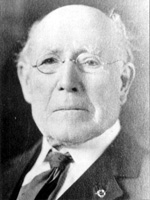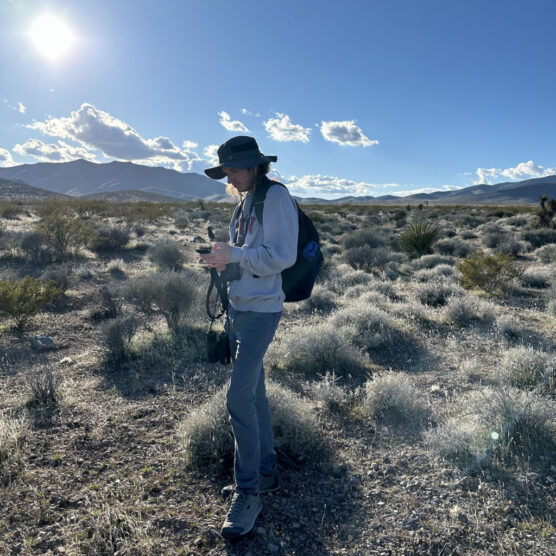Joshua trees are only pollinated by yucca moths, but how do the moths know when it is time to pollinate? That is what Pryce Millikin, a California State University, Northridge biology graduate student, is trying to figure out, and he’s asking the public to help.
Millikin is calling on those who live near the Mojave Desert to observe Joshua trees and help him collect data to contribute to his thesis, “Weather Climate Impacts on Yucca Moths and their Mutualism with Joshua Trees.”
“We don’t know much about the moths’ life cycle, or how they know when their partner trees are flowering, so we’re trying to figure that out. The moths can be hard to study directly,” said Millikin.
Fortunately, because Joshua trees can only produce fruit when the moths pollinate them, Millikin can track the moths’ activity by recording where the trees produce fruit. This is where he turned to crowdsourcing, asking the general public to help him track Joshua tree flowering and fruit production. Using the iNaturalist smartphone app, anyone can share information about nature, including uploading images of Joshua trees.
Millikin can review iNaturalist records to note which images show the trees with flowers or fruits. He is already using iNaturalist data to train computer models that can help identify what weather conditions cue the moths to come pollinate Joshua trees.
“It would be great if users could find the trees flowering or fruiting. But even if they’re not doing anything, that is also great information,” Millikin said. “We just need to know what is happening with all of these Joshua trees across the entire range.”
Joshua trees flower from the end of February to the beginning of April, said CSUN evolutionary biologist Jeremy Yoder, Millikin’s thesis advisor.
“The trees will be flowering, if they flower this year, in late February, and they’ll be making fruit by May or June,” Yoder said. “But we can use records taken any time of year.”
The data resource that iNaturalist provides is something to work with even in bad years, he said.
“That community science participation that iNaturalist contributors provide is valuable and gives us something to work with, even in years when the trees don’t cooperate by flowering,” Yoder continued.
Millikin said that type of contribution is exactly what he is looking for.
“I wanted to do something with threatened or endangered species, so I talked to Jeremy, who did something similar with a flowering project and figured out what weather cues Joshua tree flowering,” Millikin said.
Yoder’s lab began working with iNaturalist data to learn more about Joshua trees and yucca moths in 2021. “It’s a logical extension of what we’ve done in the past with the flowering model,” he said.
He turned to iNaturalist, in part, because Joshua trees can be unreliable when it comes to field work.
“They don’t flower every year and we didn’t until very recently have a good sense of what determined whether they flower or not in a given year,” Yoder said.
Millikin pointed out that the iconic Joshua trees only grow in the southwest.
“They’re very unique when it comes to plants,” he said. “They only like a certain condition and grow extremely slowly, so I wanted to help understand that.”
For more information about how to contribute to Millikin’s thesis research, visit https://joshuatreegenome.org/archives/2025/01/help-us-map-and-study-the-activity-of-joshua-trees-specialized-pollinators-yucca-moths/
Like this:
Like Loading...
Related





 Tweet This
Tweet This Facebook
Facebook Digg This
Digg This Bookmark
Bookmark Stumble
Stumble RSS
RSS
































REAL NAMES ONLY: All posters must use their real individual or business name. This applies equally to Twitter account holders who use a nickname.
0 Comments
You can be the first one to leave a comment.